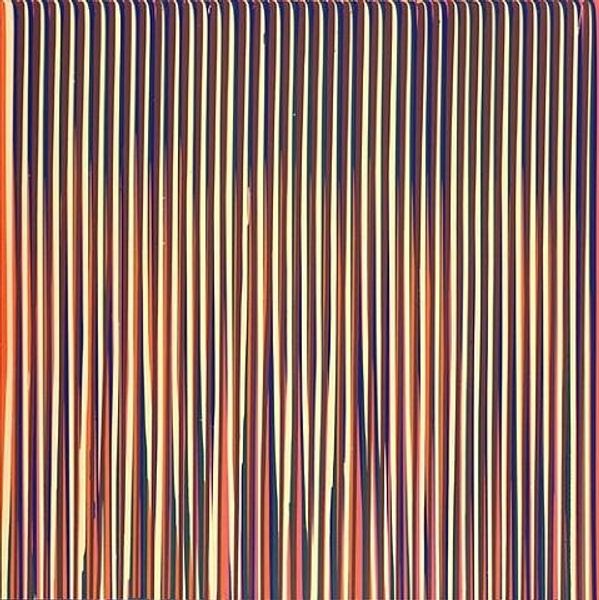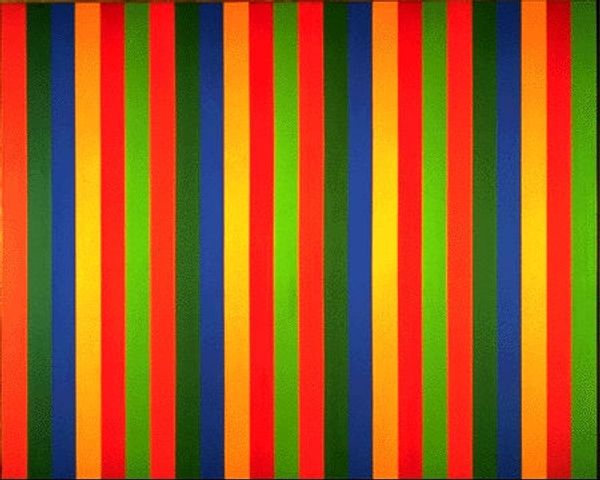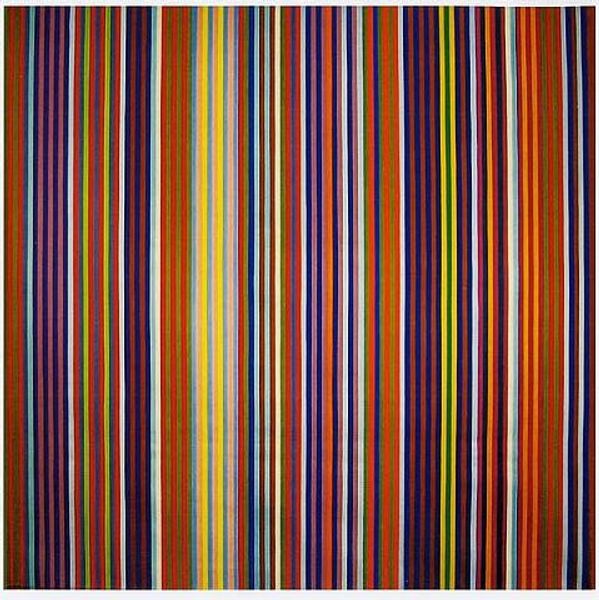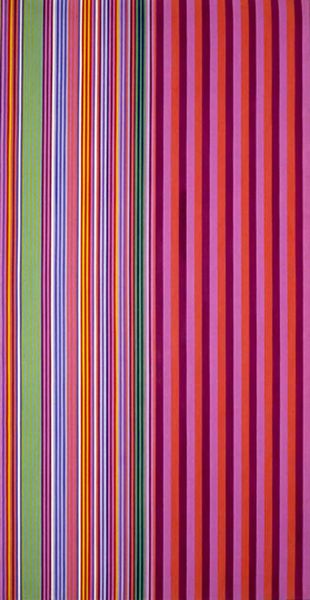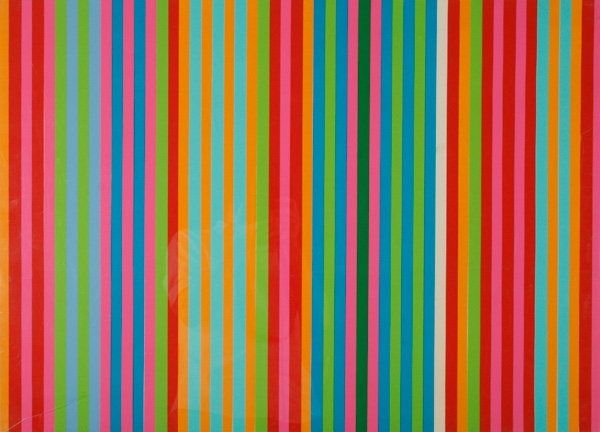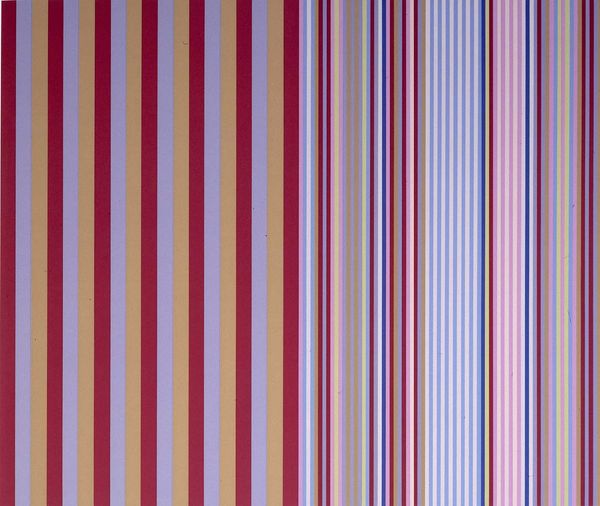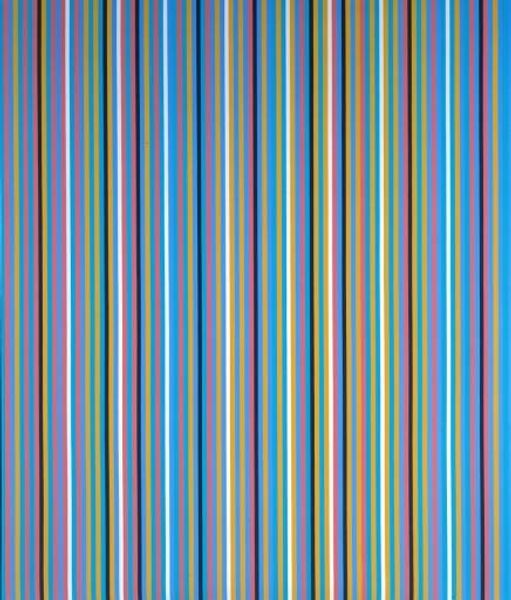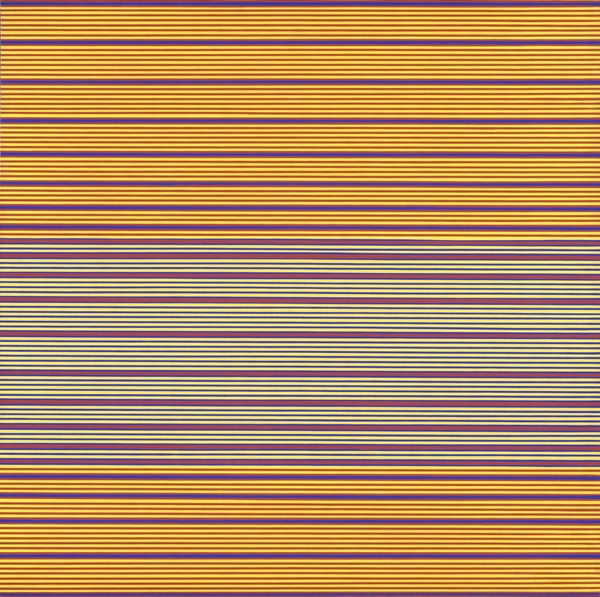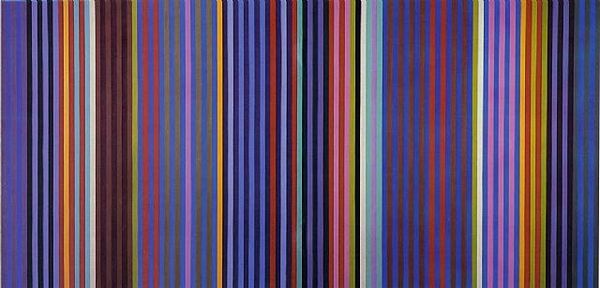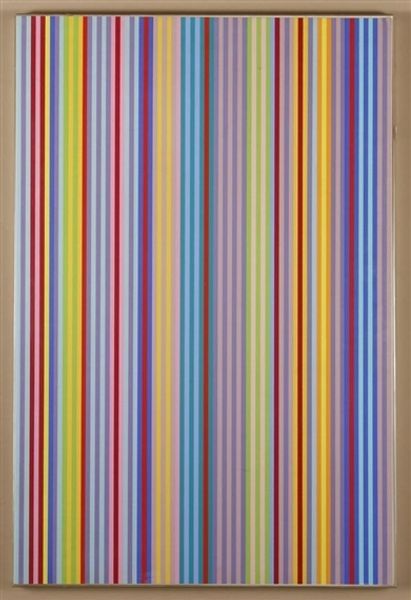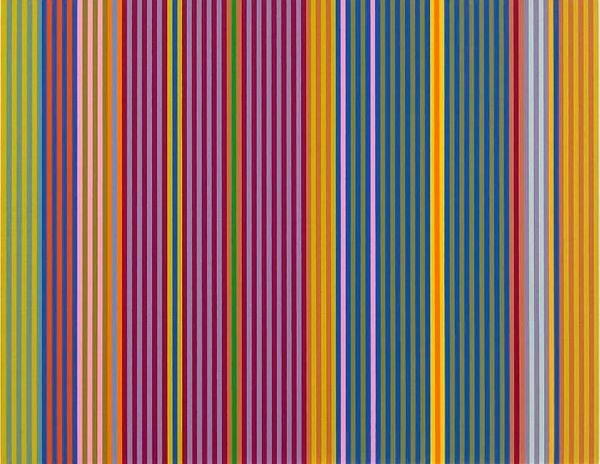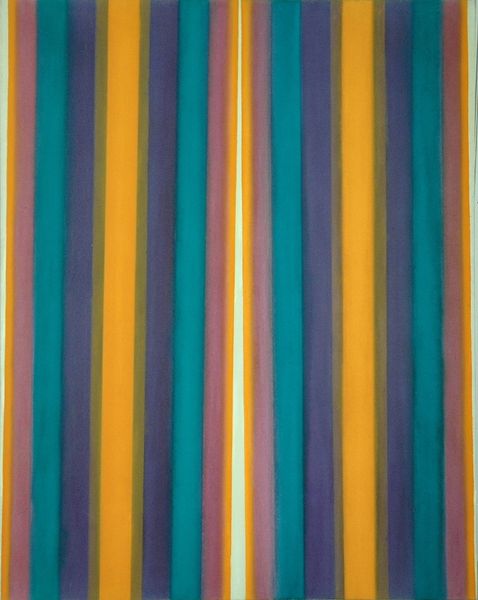
acrylic-paint
#
abstract-expressionism
#
colour-field-painting
#
acrylic-paint
#
geometric
#
line
#
modernism
#
hard-edge-painting
#
orange
#
monochrome
Copyright: Gene Davis,Fair Use
Editor: Here we have Gene Davis’ “Equinox,” painted in 1965 using acrylics. It’s a canvas filled with vertical stripes of various colors. Initially, the stark contrast between the two sections catches my eye. What do you see in this piece in terms of its historical context? Curator: The title "Equinox" suggests a balancing act, and Davis painted this at a pivotal moment when abstract expressionism was yielding to new explorations of color and form. In this painting, the dialogue between the densely packed, warm stripes on the left and the more varied, cooler tones on the right represents that tension. Consider how galleries in the '60s shaped this 'Color Field' movement. How do you see that dynamic at play here? Editor: Well, thinking about the art market, I guess those galleries were probably pushing for something new and visually striking to capture the public’s attention. The bold colors here definitely fit that bill. Is it that simple, though? Curator: Not entirely, although visual impact was undoubtedly a factor. But the move toward these large-scale, purely abstract works also reflected a broader cultural shift. Color Field painting responded to a desire for art that was less about personal narrative and more about a direct, sensory experience. The “all-over” composition moves away from traditional compositional hierarchies that, say, previous generations held in their art-making. Editor: So it’s like the painting itself becomes an environment, engaging the viewer on a different level, kind of detached from conventional representation? Curator: Precisely. These kinds of abstract, optical paintings offered the viewer the sensation and drama of engagement, without requiring any prior historical awareness. What do you take away from it all? Editor: I see how “Equinox” really reflects this transition period in art history – moving towards direct visual experiences and playing with color and space in totally new ways. It’s cool to think about the market and culture driving that. Curator: And reflecting it back! The galleries became active participants in forging these new dialogues through Gene Davis and his work.
Comments
No comments
Be the first to comment and join the conversation on the ultimate creative platform.
